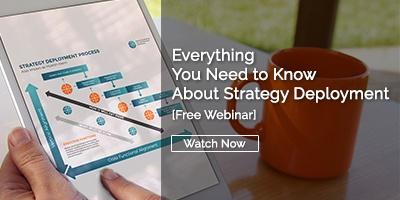 Most leadership teams understand that a strong culture leads to positive outcomes like employee engagement, improved performance, retention, and satisfied customers. Perhaps that’s why so much has been written about how to cultivate and spread the culture you want. When you read about company culture, you’ll notice a few themes including making sure that employees see and feel like part of the big picture, giving people more autonomy over their work, and providing useful, timely feedback.
Most leadership teams understand that a strong culture leads to positive outcomes like employee engagement, improved performance, retention, and satisfied customers. Perhaps that’s why so much has been written about how to cultivate and spread the culture you want. When you read about company culture, you’ll notice a few themes including making sure that employees see and feel like part of the big picture, giving people more autonomy over their work, and providing useful, timely feedback.
These are all important, but another critical piece of the culture puzzle that doesn’t seem to get the attention it deserves: the matter of how strategy is deployed throughout the organization.
One of the most effective ways to develop a culture where everyone is rowing in the same direction is to connect each layer of the organization, from the c-suite to the front lines, with the corporate strategy. When this alignment is achieved, everyone can work together to deliver value to customers. Catchball is a simple, yet powerful tool for rolling out the strategy in such a way that it touches every individual in a meaningful way.
Catchball Creates a Two-Way Conversation
Although executive leadership is responsible for developing the strategy, including three to five-year breakthrough objectives, strategy deployment cannot end there. Every department, team, and individual must be involved in deciding which tactics they can undertake in order to achieve the goals. Like a waterfall, the objectives flow down the organization, becoming more specific as they go.
Catchball is a Lean technique that provides structure to this communication. Much like the child’s game where a ball is tossed from one person to another, Catchball is a back and forth conversation between each level of the organization. Goals are passed down from one level to the next, with questions and ideas coming back up until the objectives are well understood, and the plan for achieving them is clear.
Performance indicators are also discussed and agreed upon.
Hope Is Not An Effective Tactic for Strategy Deployment
Catchball is much more effective than the more common practice of simply announcing the goals and hoping for the best. When people are involved in the process of strategy deployment, they are much more emotionally invested in achieving the objectives and highly likely to become engaged. It is also likely that front line employees have information that may cause leaders to rethink goals, priorities, and time frames. After all - they're the ones doing the work that must improve to meet those goals.
Open communication leads to better decisions in general, and with respect to strategy in particular. It is great to have stretch goals, but they should also reflect reality.
Create a Culture of Engagement
While management sets the strategy and goals, it is the day-to-day activities of front line employees that will determine the level of success. Catchball helps to create a culture in which people clearly understand their role in achieving what is necessary to move the company to the next level. Everyone has a sense of both ownership and pride.
When that is the case, people are willing to expend discretionary effort, going above and beyond what is expected. That level of engagement is contagious and exemplifies the culture that most of us are trying to achieve.
This is a time of year when many organizations are in the process of creating and deploying new strategic plans. If that is the case for you, consider Catchball as a way to implement the plan and enhance culture at the same time.



Add a Comment